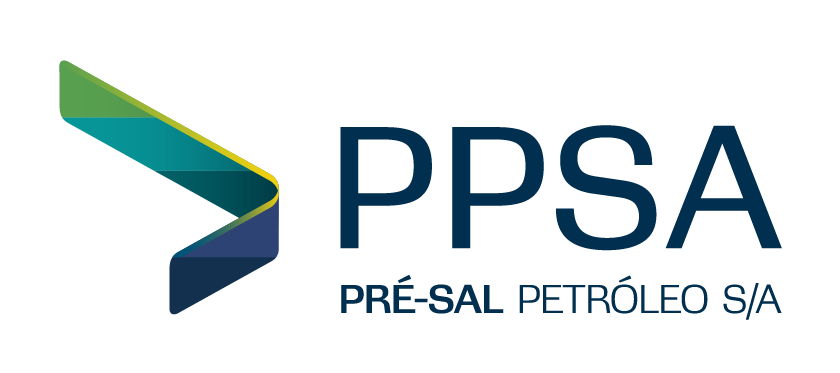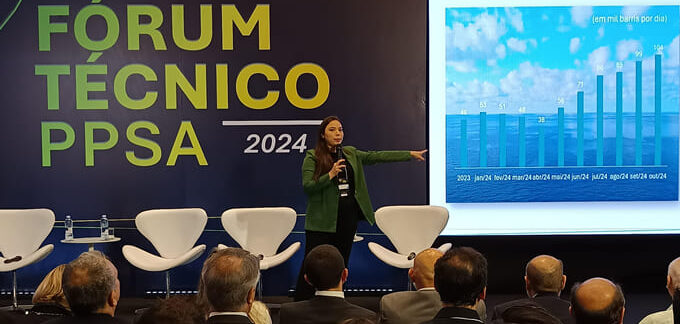PPSA could raise over BRL 500 billion with the commercialization of the Government's oil and gas shares in 19 production sharing agreements and in the production unitization agreements for Mero, Atapu, and Tupi over the next decade. The estimate is part of the study “Production estimate of production-sharing agreements and revenue for public coffers for the 2025-2034 Period,” prepared by PPSA and presented this Thursday at the company's annual Technical Forum by Acting President, Tabita Loureiro. According to Tabita, considering the values to be paid with royalties and taxes, the total revenue for public coffers from these agreements could exceed BRL 1 trillion.
The study prepared by PPSA presents three scenarios for the Government's results over the next ten years: Pessimistic, Most Likely, and Optimistic, with variations in oil and gas prices, exchange rates, and the entry of platforms into production, among other variables. The estimate of BRL 500 billion is based on the Most Likely scenario, with a price of USD 70 per barrel and an exchange rate of BRL 5.43, considered a conservative scenario. According to Tabita, regardless of the chosen scenario, all point to an increase in production.
“The Government's oil production has just reached the mark of one hundred thousand barrels per day (bpd) in October, which places us, for the first time, as the fifth-largest national producer. In this study, if we consider the Most Likely scenario, the Government's production reaches its peak in 2030, with 543 thousand bpd. In the Optimistic scenario, it reaches 583 thousand bpd. This will completely change the volumes of oil commercialization for the Government,” he explained.
Tabita emphasized, however, that although the projections are promising, the numbers presented last year for the 2024-2033 period estimated an even greater increase. “In the previous study, the Government's production peak would be reached one year earlier, in 2029, with 564 thousand barrels per day.The delay and the smaller volume are explained by the postponement of platform production start-ups in some fields, the deferral of scheduled well drilling, and the increase in costs for some projects, which impact the cost recovery in oil. The market has been struggling with contractual adjustments in the construction and assembly of FPSOs, higher daily rates for drilling rigs, and a general increase in investment costs in subsea agreements,” she said.
Considering the Most Likely scenario, it is estimated that from 2025 to 2034, the production-sharing agreements will have a cumulative production of 6.6 billion barrels of oil. Of this total, the Government's accumulated share will be 1.4 billion barrels.
Natural Gas
As with oil, three scenarios were outlined for the Government's natural gas production available for export in the production-sharing agreements and in the unitization agreements. Even considering the estimates of the Pessimistic scenario, production is expected to increase from the current 255 thousand m³/day to 3.3 million m³/day in 2031. In the Optimistic scenario, it reaches 3.5 million m³/day in 2031, remaining above the three million range for five consecutive years. It is worth mentioning that these estimates do not take into account the yield factor of the UPGNs (Natural Gas Processing Unit), meaning that a portion of this gas will be converted into LPG (Liquefied Petroleum Gas) and liquids.
Considering the Most Likely scenario, it is estimated that from 2025 to 2034, the agreements will have a cumulative production of 48.5 billion m³ of natural gas. Of this total, the Government's accumulated share will be 7.7 billion m³.
Investments
In addition to the amounts raised for the Government, the investments are also significant: USD 53 billion between 2025 and 2029, allocated to the commercial production sharing agreements.
Environment
The study also presents, for the first time, a framework with the Greenhouse Gas (GHG) emissions from the production sharing agreements and the AIP of Tupi, projects with the Government's participation. According to Tabita, the average carbon intensity of these agreements was 10.85 kgCO2e/boe, while the OGCI (Oil and Gas Climate Initiative) reference, the global average, is around 18 kgCO2e/boe.
Access here the full presentation.
Live stream: https://www.youtube.com/@agenciaeixos
Access the schedule: https://www.presalpetroleo.gov.br/forum-2024/


